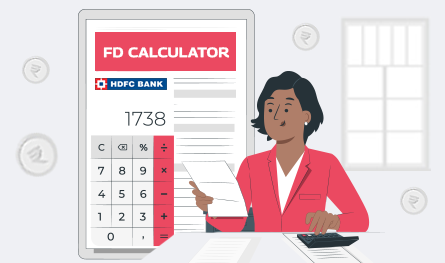Transferring Car Insurance from One Person to Another – Complete Guide
.png)
Looking to sell your existing car to get a new one? Do you know the process of transferring car insurance policy from one person to another? Learn here.
.png)
What’s Inside?
- Why is it important to transfer car insurance?
- Process to transfer car insurance from one individual to another in India
- Car insurance transfer and No Claim Bonus (NCB)
- Can you transfer NCB to the new car owner?
- Documents you would need to retain NCB
- What effect can it have if the car insurance transfer process is not complete?
- Who is responsible for transferring a car insurance policy?
To change vehicle ownership is an integral part of the process of selling a car both the person selling the car as well as the one buying it. However, it is a fact that many of us do not have proper knowledge and clarity on a very important thing – transferring the existing car insurance policy. Let’s learn about the process in this blog.
First you must know whether you need to transfer car insurance at all while selling your car and if so, why?
Why is it important to transfer car insurance?
You need a car insurance to protect your car from any unforeseen events and damages. So, when you sell your car, there is no point in having an insurance for that car. Thus, it is important to transfer the car insurance in the name of the new owner. If you are the buyer, just ensure to get the car insurance in your name.
Below are two other important reasons to transfer car insurance policy:
- To evade any kind of future liabilities – By transferring the existing car insurance policy in your name in case you buy a second-hand car , you can stay away from any future liabilities. Without the papers being transferred, you will not be able to file a claim for any third-party liability in case of an accident. Likewise, in case you are the seller of the car you must transfer the insurance so that you do not have to pay for any third-party damages of the new owner whom you have sold your car to.
- To keep your No Claim Bonus intact – You must also transfer the car insurance papers to be able to retain your NCB bonus. Since you need to apply for the retention of NCB bonus to your insurer, you have to inform them about the selling of your car. And you cannot have the NCB transferred unless you get the insurance policy transferred to the new owner.
Process to transfer car insurance from one individual to another in India
To transfer car insurance from one person to another, you need to submit the below mentioned documents to your insurer:
- Form 29, 30 (new RC copy)
- Old car insurance papers
- NOC from previous car insurance policy owner
- Application form – New
- Insurance company inspection report
- NCB difference amount
Car insurance transfer and No Claim Bonus (NCB)
NCB is an important aspect of the car insurance transfer process. While transferring the car insurance, you must remember to retain your no claim bonus. For this, you have to apply to your insurer by submitting a NCB retention letter, which makes the previous owner of the insurance policy eligible to obtain the NCB discount.
Can you transfer NCB to the new car owner?
No, the NCB or no claim benefits are non-transferrable. So, you can transfer your car insurance policy but cannot get the NCB transferred.
Documents you would need to retain NCB
Below are the documents required to submit to the insurer to receive a retention letter for NCB:
- Submit a letter requesting the insurer to cancel the existing policy.
- Submit the original copy of car insurance policy as well as the certificate, form 51
- You also need to submit RTO form 29, which serves as a notice to transfer car ownership.
- Further, you need to submit form 30 RTO, which serves as a written vehicle ownership transfer form to intimate the insurer and to transfer the ownership.
- You also need to submit a copy of the registration certificate book (RC book) with the new owner’s name being mentioned.
- And you need to submit delivery proof of the vehicle to the new car owner.
You have seen that form 29 and 30 are very important documents required to obtain a retention letter for NCB transfer.
What effect can it have if the car insurance transfer process is not complete?
If the car insurance transfer process remains incomplete, you will not be able to make any claims for third-party damages if any such damage is caused due to an accident or collision.
In the event that uninsured automobile causes third-party damage, you will be legally responsible the losses from your own money.
Who is responsible for transferring a car insurance policy?
The Motor Insurance Act makes it clear that it is the responsibility of the seller of the car to ensure that the current car insurance policy is transferred to the new owner. And the process should be done within 2 weeks of selling the vehicle.
Further, you must know that for the first 2 weeks of selling the vehicle, it automatically transfers the third-party insurance cover to the new owner and stays active too. However, this facility is not allowed for own damage coverage. So, to get Own Car Damage coverage, you have to wait for the transfer car ownership to be completely done. Additionally, if the transfer is not completed within the first two weeks, even the third-party policy gets dissolved.

Author Bio
Paybima Team
Paybima is an Indian insurance aggregator on a mission to make insurance simple for people. Paybima is the Digital arm of the already established and trusted Mahindra Insurance Brokers Ltd., a reputed name in the insurance broking industry with 21 years of experience. Paybima promises you the easy-to-access online platform to buy insurance policies, and also extend their unrelented assistance with all your policy related queries and services.
Other Motor Insurance Products
Latest Post
.jpg)
Having a bike is not just about convenience, it’s a huge responsibility. Financial protection of your two-wheeler is important and the best way to ensure that is to have a bike insurance policy that will protect you in case of an accident, theft or a natural calamity. There are so many options when it comes to policies, making it difficult to know what’s best. This guide makes it easier to choose the best bike insurance policy that is suitable for you.

.jpg)
Sometimes, we do not pay as much time and heed to car insurance policies as we do for life insurance plans. While this is quite natural, you must know that such a mistake can lead to heavy financial losses.
Even though people are now changing and more and more individuals have begun opting for car insurance, most people from the upper and lower-middle-class sections in India are not aware of why their insurance premiums vary so much.
Knowing about such variations and the factors that cause such variations won’t just educate you about premiums. It will also help you address higher premiums and tackle them effectively.


Fixed Deposits (FDs) are one of the safest ways to grow your savings. HDFC Bank offers attractive FD interest rates, allowing you to earn guaranteed returns on your investment. But before you invest, it's important to know how much interest you will earn and what your final maturity amount will be.


Health insurance plans are purchased with the hope of medical protection in times of need. However, sometimes it ends up being a source of surprise and disappointment. This mostly happens when people rush to buy health insurance plans, often overlooking essential aspects. Ignoring waiting period clauses, misunderstanding exclusions, and being unaware of sub-limits can lead to unwanted problems in the future.

.png)
In case of a medical emergency, cashless hospitalization is the best option to avail for anyone. This is only possible if your insurer has a tie-up with some hospitals that are covered under its network and where you can seek treatment without spending a penny. Here we share the list of network hospitals empaneled with Aditya Birla Health Insurance.






 Car Insurance
Car Insurance
